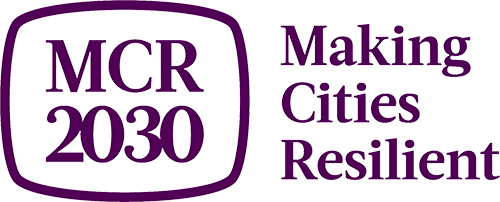City-to-city Peer Review Tool
City-to-city peer review tool

Peer review of local civil protection mechanisms could offer an independent/ transparent assessment
Peer review of local civil protection mechanisms could offer an independent/ transparent assessment, adding clear value to building local and national resilience. The tool aims to assist cities with the challenge of strengthening their implementation of disaster risk reduction. Conducting rigorous city-to-city peer reviews is a challenge for practitioners and policy-makers who want to learn from best practice as this has not yet been assembled into an easy to use tool.
This tool has been developed and tested by the municipalities of Salford, Amadora and Viggiano. the University of Manchester, UNDRR, the Department of Communities and Local Government (UK), Portuguese National Authority of Civil Protection and the Associazione di Protezione Civile Gruppo Lucano under the Uscore2 project funded by European Commission in support the Making Cities Resilient Campaign and the Sendai Framework for Disaster Risk Reduction.
Objectives for the city-to-city peer review tool are to:
- ensure that the review tool reflects a comprehensive, all-of-society approach to DRR
- identify data, information and evidence useful when conducting a city-to-city peer review
- aid the implementation of the Sendai Framework at local and therefore national/international levels through alignment to local indicators
- developed in accordance with the Sendai Framework
- ensure it is useable by cities at all levels of maturity in DRR planning
Download the Tool:
- Uscore2 Summary Step-by-Step Guide to City-to-City Peer Reviews for Disaster Risk Reduction
- Step-by-Step Guide to City-to-City Peer Reviews for Disaster Risk Reduction
- Step-by-Step Guide to the Impact Evaluation Methodology
- Module 1: Organise for Disaster Resilience - to view
- Module 2: Identify, Understand and Use Current and Future Risk Scenarios
- Module 3: Strengthen Financial Capacity for Resilience (including Business Continuity)
- Module 4: Pursue Resilient Urban Development and Design
- Module 5: Safeguard Natural Buffers to Enhance Ecosystems’ Protective Functions
- Module 6: Strengthen Institutional Capacity for Resilience
- Module 7: Understand and Strengthen Societal Capacity for Resilience
- Module 8a: Increase Infrastructure Resilience
- Module 8b: Public Health & Disaster Risk Reduction
- Module 9: Ensure Effective Disaster Response
- Module 10: Expedite Recovery and Build Back Better

